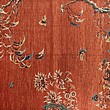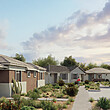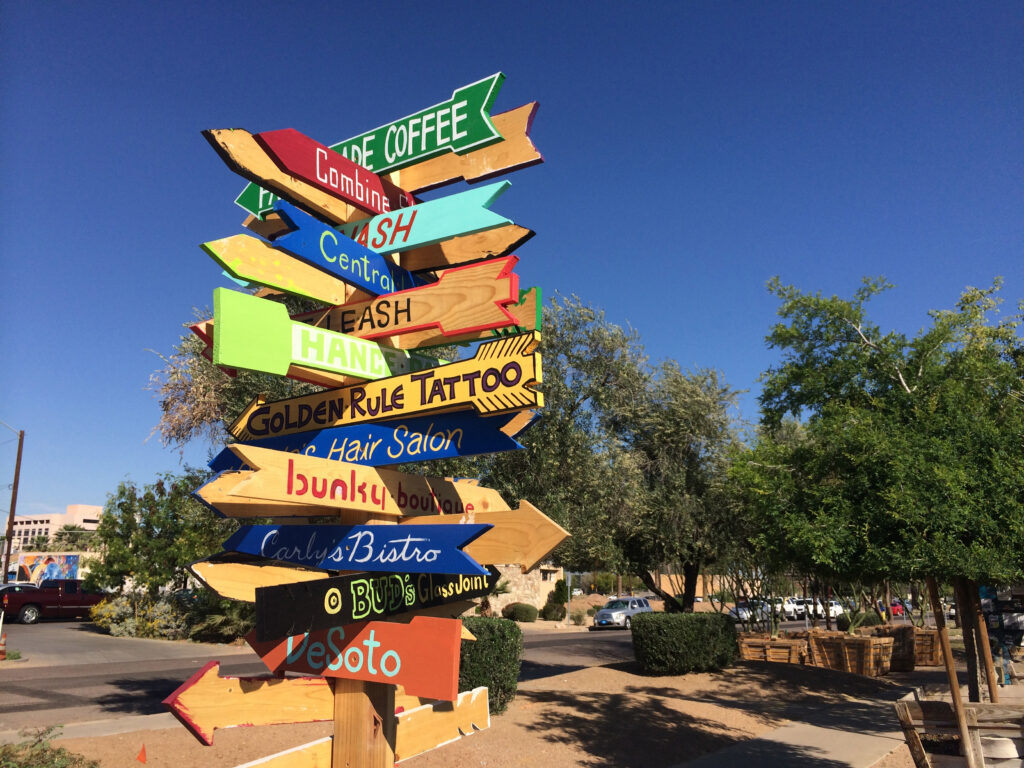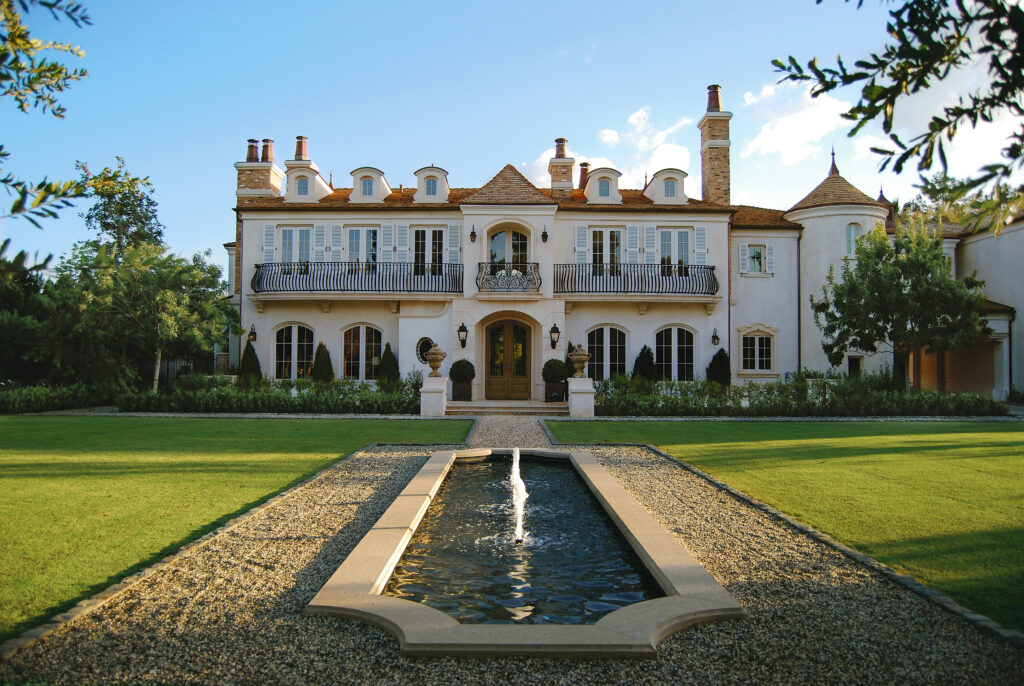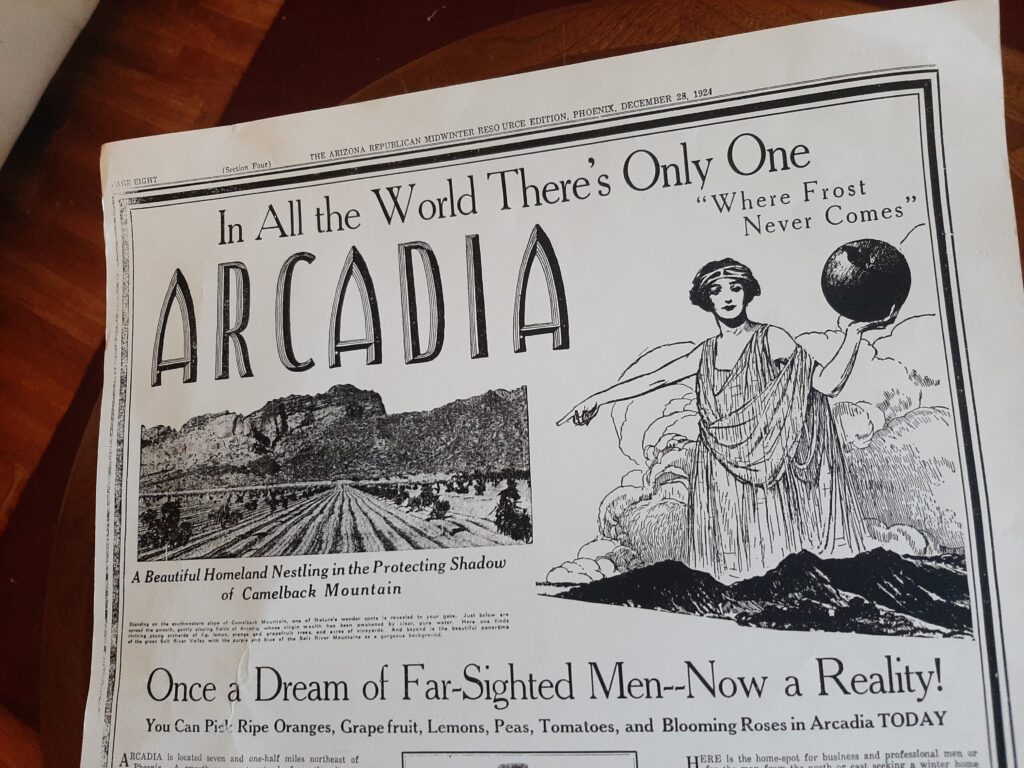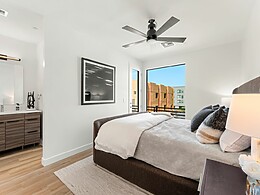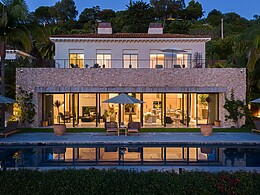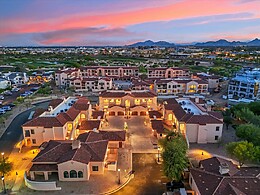Roosevelt Street, once a Phoenix community in desolation, is now in a renaissance; South Scottsdale, for many years a bleak pass-through south to Tempe, is also thriving, with residents dedicated to its continuing vitality; and suburban-spirited Arcadia remains a haven for the well-to-do.

Roosevelt Street Renaissance
After decades of neglect and blight, the century-plus-old Roosevelt Street community in downtown Phoenix nowadays showcases renovated homes, many a century and older, along with successful stores, restaurants and boutiques. Businesses and upscale apartment communities for all ages are in high demand. In other words, the Roosevelt area is back, bustling and moving forward.
The community developed in the 1890s after flooding from the Salt River, explains John Jacquemart, a Phoenix-based researcher and historian.
“Roosevelt started with the purchase of an individual lot and was developed by many contractors, developers and architects. The build-out was slow, using an assortment of architectural styles,” he says.
Kevin Weight, principal planner for the City of Phoenix Historic Preservation Office, notes that the area was an early “streetcar subdivision,” providing Phoenicians with public transportation in addition to the car, the horse and the horse-drawn carriage.
Roosevelt is listed on both the National Register of Historic Places and the Phoenix . Historic Property Register. Although a number of important structures were razed during the recent volatile decades, notable ones remain.
“It was also where several important Phoenicians lived during the late 19th- and early-20th centuries,” Weight adds. “In fact, one area along Central was the city’s iteration of “Millionaires Row.”
Restored homes there include the magnificent Italian-influenced Marcellin L. Vieux House; the “Airplane Bungalows,” beautifully revisioned for The Arizona Commission on the Arts; just north, the city-owned Mission Revival/Craftsman Ellis/Shackelford House, today home of the AZ Humanities Council; and a community centerpiece, Trinity Episcopal Cathedral.
Greg Esser, a founder of the Roosevelt Row Community Development Corporation, purchased an historic 1918 home at Fifth and Roosevelt streets in 2000 and refurbished it a few times, planting many trees at the site and in the neighborhood. A few years later, he opened Eye Lounge Gallery, followed by Made Art Boutique in the home – one of the first of the “Roosevelt Renaissance” boutiques. A new building on the same property houses Greenwood Brewing, one of Arizona’s only woman-owned craft breweries.
Esser explains that people began moving north of Roosevelt as the Valley expanded after World War II.
“Fewer people stayed downtown, and the Roosevelt area went into a long period of decline. All the bungalows on Roosevelt and Portland were mostly empty for three to four decades,” he says, adding that by 2000, 60 percent of the land in the community was vacant.
Those homes that were intact were for the most part vacant; artists moved into the bungalows, and the absentee owners planned to raze them for higher-density development.
The artists, in fact, helped give people a reason to come down again to the neighborhood. Ted Decker became involved with Roosevelt Row in the late 1990s, joining with Esser, Cindy Dach and other pioneers such as Kimber Lanning, founder of Local First Arizona.
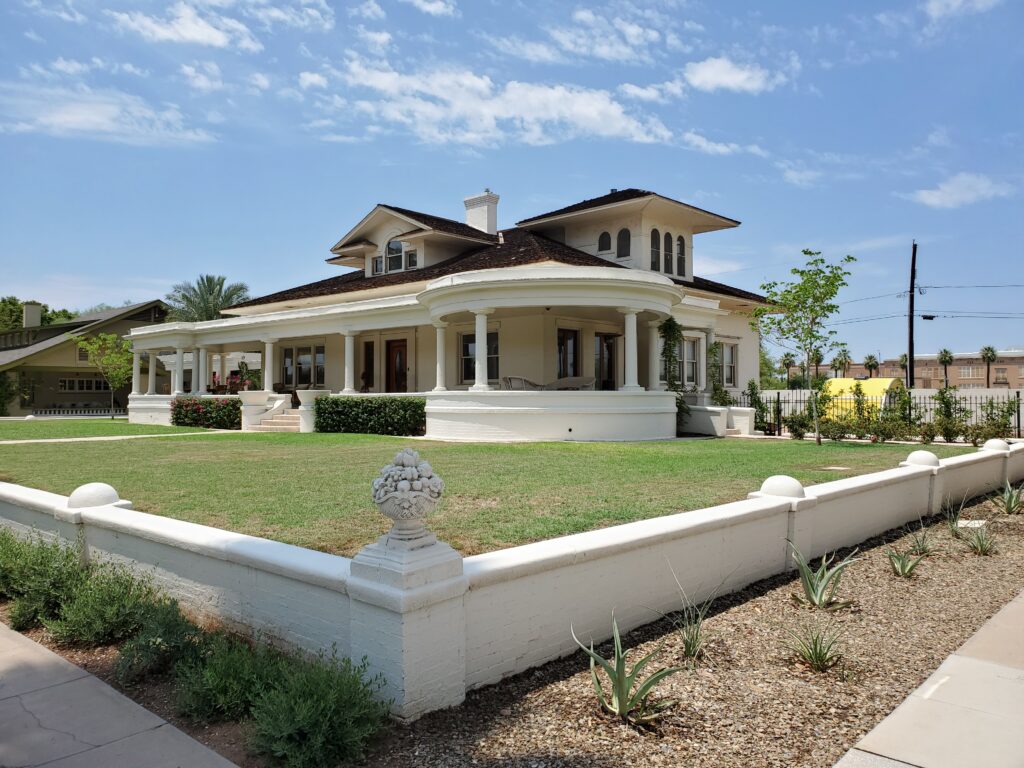
“The pioneering done by the aforementioned people, especially Greg Esser, is remarkable,” says Decker, an instructor in the School of Art, Herberger Institute at ASU and Mesa Community College. Born and raised in Phoenix, he has known the area from childhood; his parents were married at Trinity Cathedral and his grandfather lived on Sixth Avenue just south of Roosevelt.
In 2007, he co-founded the Phoenix Institute of Contemporary Art (phICA) with Esser and Eddie Shea. Five or six galleries that had opened connected with this effort. Everyone agreed that the Valley needed a place for artists and the public to gather, so they stayed open in conjunction on the weekends.
And restaurants joined the rebirth, including Johnny Chu’s pioneering Fate and Matt’s Big Breakfast. Chu now runs Mifan Claypot Kitchen nearby. Today, there are locally owned places such as Carly’s Bistro and Angel’s Trumpet Ale House.
Jazz in AZ opened The Nash on W. Roosevelt St. and is now in its 11th year delivering a variety of jazz entertainment and education.
“Roosevelt Row is special because of its unrivaled proximity to performing arts, sports, educational institutions, entertainment, dining and libating,” says Joel Goldenthal, executive director. “It’s fun, young and energetic, with unmatched walkability, vibrancy and diversity.”
Adds Decker: “Ten years ago, very few people could be seen walking on the street. Now, I notice people out and walking on Roosevelt at any given time. It has become a destination for many people who are interested in art and culture, for ASU and other college students — and for people of all ages and backgrounds to gather together.”
South Scottsdale Moves Up
The more recent focus of development in South Scottsdale has been either infill development or redevelopment, says Adam Yaron, planning and development area manager for the city’s Planning & Development Department.
“Many of the proposals approved since 2010 expand the existing mix of uses within the community to better serve existing neighborhoods or to create new vertical mixed-use developments,” he says.
A number of multi-story apartment and condo communities have replaced older buildings. These new mixed-use developments benefit the area in various ways, he explains.
“A combination of residential, commercial and retail spaces fosters a dynamic local economy and . . . provides stability as various sectors may thrive or adjust based on changing market demands,” Yaron says.
They also foster social interaction by creating vibrant public spaces, parks, community centers, plazas and gathering areas where residents, workers and visitors can interact and build relationships.
Home values have increased in the area due to easy access to Old Town Scottsdale and outdoor recreational activities including the Indian Bend Wash.
“South Scottsdale . . . offers a variety of housing options, has a focus on connectivity and green spaces, vibrant local economy, thriving arts and culture scene and has a strong emphasis on preserving historically significant structures and celebrating the area’s cultural legacy,” Yaron says.
Jennifer Steele has lived in the area for 10 years with her husband, Patrick, and now three young children. She believes South Scottsdale looks better than in previous years, with road improvements, her neighbors renovating and upgrading their homes, and new midrise buildings with colors that are more diverse than the traditional drab neutrals. The parks are “phenomenal,” such as Eldorado.
“I am grateful that we live in a city that takes care of the parks and wants to improve them,” she says.
Since Covid, the city has gone “condo-mania” with vertical development and short-term home rentals bring new neighbors as part of the process.

“These vary from very nice people visiting to a party like night club moved in for the entire week,” longtime resident Jim Bourassa says. “My wife Mary and I love it here and would like to help keep Scottsdale’s old charm as one of the best towns to live in for a long time.”
Maggie Folmar is a South Scottsdale resident and a realtor with The Key Team – KMF Real Estate. She’s happy to be seeing more renovations of the older homes and younger couples with families moving in.
“There are so many parks, restaurants and shopping, all supporting the busy lifestyle of families on the go,” she says. “Everything I need is close by, and yet it still feels like a suburban neighborhood.”
Arcadia: Citrus Paradise in Transition
“Arcadia” is a golden word in Valley real estate, resonant in the same way as “Silverleaf” and “Biltmore.” Founded in the early part of the 20th century, it evokes serenity, economic security, citrus trees, views of landmark Camelback Mountain, strolling neighbors and homeowners waving from front patios.
A century ago, the community was a subdivision of five- to 10 acres amid the citrus groves, historian Jacquemart explains. A few of these early homes remain.
Beginning in the late 1940s, Allied Homes built many of the next generation of homes, part mass-produced. Other subdivisions were completed by John Sing Tang, AIA, believed to be the first Asian-American registered architect in Arizona, explains Douglas B. Sydnor, FAIA, founder of Douglas Sydnor Architect + Associates, Inc. in Scottsdale.
Old Arcadia was a growing agrarian community during the 1920s to 1950s and New Arcadia from 1960 on.
“Early central Phoenix lots were smaller, and when people came out to Arcadia they could build bigger houses with more square footage,” says Richard Rea, an Arcadia resident since the 1960s.

Rea lives in a 1957 three-bedroom ranch home on an acre, including some citrus trees. Born in Iowa, he moved to the Valley from Florida with his widowed mother in 1955. “And today the area is beneficiary of people moving in from California,” he notes, adding that five couples on his block are from the state.
“We have seen such a massive transition in Arcadia,” explains Scott Jarson, co-principal of azarchitecture/Jarson & Jarson in Scottsdale, which has specialized in historically significant Arizona homes for 33-plus years.
“The original ranch designs are disappearing with regularity and have given way to the development of larger multiple level homes that have changed the nature of this special location,” he adds. “You’ll still get the hint of that lovely citrus blossom in spring, but certainly not like 25 years ago.”
Some beautiful 1950s to 1960s custom homes remain, historic adobe homes, a handful of modern architectural designs and even some of those early tract homes, Jarson says.
“Earlier remodels and additions strived to maintain the original ranch styles and exterior materials. However, over time such renovations attempted to transform the existing architectural character into a more Mid-Century Modern with exposed concrete masonry units, natural wood accents, translucent or clear glass panels and rusted steel,” explains Sydnor, who completed a renovation of a 1950s ranch home interior in the Arcadia area.
During the last 20 to 30 years, removing the homes has been underway, he explains, with more nostalgic revival styles such as Spanish Colonial, Territorial, Santa Barbara and Pueblo being used. Original homes on the large lots have been replaced by much larger houses considered out of the spirit with the charm of the community.
Even though most of the citrus trees are gone, they continue to establish the neighborhood character of the Arcadia area. Studies have shown that the temperature drops a few degrees within the Arcadia area because of the landscape and the flood irrigation that feeds it.
Arcadia is not listed on any register, Phoenix planner Weight explains, but the most famous home in the community on the National Register is the David and Gladys Wright House, which Frank Lloyd Wright designed for his son and daughter-in-law.
“It ‘floats’ at the top of the surrounding citrus trees and commands a fabulous view of Camelback Mountain,” Jarson says.
He also mentions the Patrick House, designed by Al Beadle, “proving that modern architecture can also play well among irrigated ranch-home lots.”
Another Valley architect, Mark Candelaria, AIA, has completed almost 50 homes in the area during his distinguished 40-year career.
“The Arcadia neighborhood is an ever-evolving collection of home styles, from the early California Ranch-style homes of the ’40s and ’50s that replaced the citrus orchards to the mega-mansions of today,” he says.
“Arcadia exemplifies the neighborhood spirit: ‘neighborhood’ as opposed to a just a place where people go through the gates and then go to their homes,” Rea says.
For Jarson, it’s a sense of history, “a deep connection to our past,” he says. “Arcadia is a visual remembrance of why people first came to this part of the desert. I sincerely love that connection to our past.”
This story appeared in the AZ Foothills Home & Design, Best Places to Live issue. Read the full issue here.


